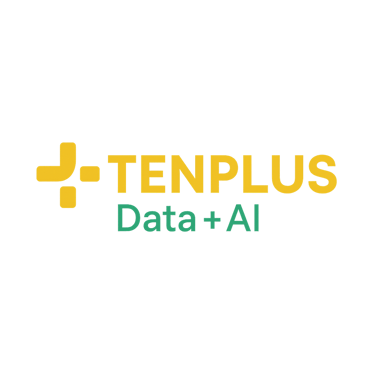Automating API-to-Analytics Data Pipelines for a Healthcare Provider
A leading healthcare provider faced significant challenges in managing its growing data operations. Historically, patient and operational data were pulled manually from on-premises servers via CSV exports, creating delays, inconsistencies, and data integrity risks. Additionally, the growing need for real-time insights meant the manual approach was no longer sustainable. The client needed a scalable, automated solution to pull patient data directly from APIs, transform it, and load it efficiently into the analytics layer — all while ensuring accuracy compared to existing on-premise records.
3/6/20232 min read

Sector: Health care
Duration: January 2024 - April 2024 (In support phase)
Work Delivered:
Azure Data Factory (ADF) Pipeline Development:
Designed and built end-to-end data pipelines in Azure Data Factory to automate data ingestion from external APIs.
Parameterized pipelines for flexibility across different data sources and endpoints.
Implemented robust error-handling and retry mechanisms to manage API inconsistencies or downtimes.
Data Transformation:
Developed transformations directly within Azure Data Factory using Azure Data Flows for lightweight ETL tasks.
Leveraged Azure Databricks for complex transformations and parallel data processing where necessary (e.g., flattening nested API responses, patient data validations, data cleansing).
Automation and Scalability:
Implemented parallel processing techniques to improve ingestion and transformation performance.
Mapped parameters dynamically across all pipelines to maintain consistency and ensure data from the API matched the format and standards used in on-premises systems.
Data Validation and Quality Assurance:
Built mechanisms to cross-validate incoming API data against the legacy on-premises system to maintain clinical data integrity.
Developed control frameworks to monitor data volumes, success/failure rates, and processing times.
Pressure Points / Challenges:
Ensuring Data Integrity:
Healthcare data is sensitive, and even minor mismatches between API data and on-premises records were unacceptable.
Performance and Parallelization:
Since API calls could be slow and data volumes were large, special focus was needed on maximizing parallel execution while managing API throttling limits.
Dynamic Parameter Mapping:
Each data entity (patients, treatments, appointments) had its own schema and validation logic, requiring sophisticated dynamic parameter handling in ADF.
Program/Project Overview:
Scope:
Automate the full lifecycle from API data ingestion to analytics-layer availability.
Eliminate manual CSV exports and reduce operational overhead.
Ensure HIPAA-compliant handling of patient data.
Collaboration:
Worked closely with healthcare compliance teams to ensure adherence to regulatory standards.
Partnered with internal data engineering and analytics teams to validate data mapping rules and quality standards.
Problems and Pains (Pre-Project):
Manual Data Pulls: Data engineers and analysts spent significant time manually pulling and formatting data.
Delayed Reporting: Data was often outdated by the time it reached decision-makers.
Inconsistency and Errors: Manual handling introduced risks of human error and inconsistent records.
Scalability Issues: The manual process could not handle the growing volume of patient and treatment data efficiently.
Quantified Impact of Pre-Project Pain Points:
Operational Bottlenecks: Manual processes delayed data availability by up to 48 hours.
Compliance Risks: Manual handling increased risks around data privacy breaches.
Resource Wastage: Significant engineering time (~30–40% of effort) was spent on repetitive manual tasks.
Promises:
End-to-End Automation: No manual intervention needed to refresh patient datasets in the analytics environment.
Accuracy and Validation: Assurance that automated pipelines deliver 100% match accuracy compared to legacy systems.
Faster Insights: Enable near real-time reporting capabilities for patient care and operational management.
Scalable Framework: Future APIs and data sources can be easily onboarded with minimal changes to the pipeline architecture.
Problems and Pains (In-Project):
Handling API Rate Limits: Required optimization of batch sizes and retry policies.
Complex Data Mappings: Nested JSON structures and complex data mappings from APIs to analytics models needed extra iterations.
Solution:
Introduced a queuing mechanism in ADF to manage throttling and retries.
Conducted iterative development cycles, validating with sample data at each stage to ensure business acceptance.
Payoffs:
For the Organization:
Time Savings: Reduced data ingestion time from days to hours.
Cost Efficiency: Freed up engineering resources for more strategic tasks.
Compliance Confidence: Automated and auditable pipelines improved regulatory posture.
Improved Patient Care: Faster access to patient data enabled more timely decision-making and enhanced operational efficiency.
Contact us
Whether you have a request, a query, or want to work with us, use the form below to get in touch with our team.



